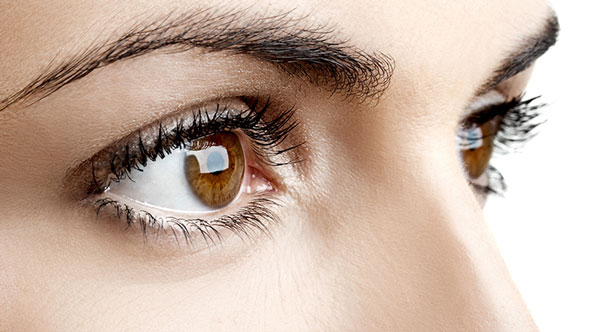Are your eyes often sore, red, and form crusty flakes near the eyelashes? If so, it could be blepharitis. Here’s what you should know about what causes blepharitis, how to get rid of it and keep it from coming back
What Is Blepharitis?
In simple terms, Blepharitis means inflammation (swelling) of the eyelid margin (Blepharos=eyelid). There can be several reasons why one gets Blepharitis. Bacterial eyelid infection, dysfunction of the Meibomian (oil) glands of the eyelid, Dry eyes, fungal eyelid infection, or parasitic infection (Demodex, eyelash mites).
Most patients with Blepharitis will complain of burning or stinging eyes, a feeling of dryness, crusty dandruff at the base of lashes, watery and itchy eyes, grittiness and redness in the eyes. Blepharitis occurs more frequently in certain skin conditions such as ocular rosacea, seborrheic dermatitis and psoriasis.
More severe the blepharitis, more are these symptoms. Sometimes, the complaints can be intermittent. In extreme cases, it can also cause loss of eyelashes (madarosis). Blepharitis is a common cause of inability to wear contact lenses comfortably, forcing many people to give up wearing contacts. Clogged meibomian glands also can cause the formation of a stye at the lid margin or a chalazion (nodule) within the eyelid.
Causes
Blepharitis is typically caused by overgrowth of bacteria that live along the margins of the eyelids and at the base of the eyelashes. Over time, these bacteria build up to form a biofilm, which is toxic. Biofilms can attract parasitic eyelash mite called Demodex folliculitis. Proliferation of this Demodex mite increases the irritation and inflammation of the eyelids. Bacteria in the biofilm also produce toxic substances called exotoxins that cause swelling of the meibomian (oil) glands of the eyelid. These glands normally secrete oils that are important for tear film stability. The quality and quantity of tears is therefore affected, leading to dry eye like symptoms. This constant vicious cycle leads to chronic dry eye discomfort.
 How to get rid of Blepharitis?
How to get rid of Blepharitis?
The treatment should begin with a visit to your eye specialist, to confirm the diagnosis. Treatment of Blepharitis includes eyelid scrubs and medical treatment. Removing the biofilm and bacteria from the lid margin requires a regimen of warm compresses and lid scrubs to clean your eyelids. Cleaning agent can be with eyelid cleaning pads, or diluted baby shampoo with the use of cotton buds. Rub gently around the edges of your upper and lower eyelids, but do not get cleaning solution in your eye. Your eye specialist also may prescribe topical medicines to reduce bacteria or other microbes on the eyelids. It is important to continue this regimen as prescribed, and usually it takes a few weeks for the response to be visible. Giving up early on this treatment is a very common cause of failure.
Eyelid Hygiene and How to avoid Blepharitis
Eyelid hygiene is very helpful to treat and control blepharitis, but only if performed properly. Follow your eye doctor’s recommendations on how often to use a warm compress and how long to keep it in place.
Cleaning your eyelids is the next essential step. Your doctor will recommend what to use for the cleaning agent. Options include warm water, diluted baby shampoo or an over-the-counter or prescription eyelid cleanser. It’s a good idea to minimize use of eye makeup, and avoid contact lenses while on treatment for blepharitis. It typically is a chronic condition, meaning it can come back frequently and be a recurring problem.
The best way to avoid blepharitis is to clean your eyelids daily. This will prevent the buildup of bacteria, biofilm and Demodex mites on the eyelid margin. Non-prescription lid scrub products are best suited for this. Your eye specialist may prescribe nutritional supplements such as Omega-3 fatty acids that help to keep the eyelid oil glands healthy and your eyes moist.














